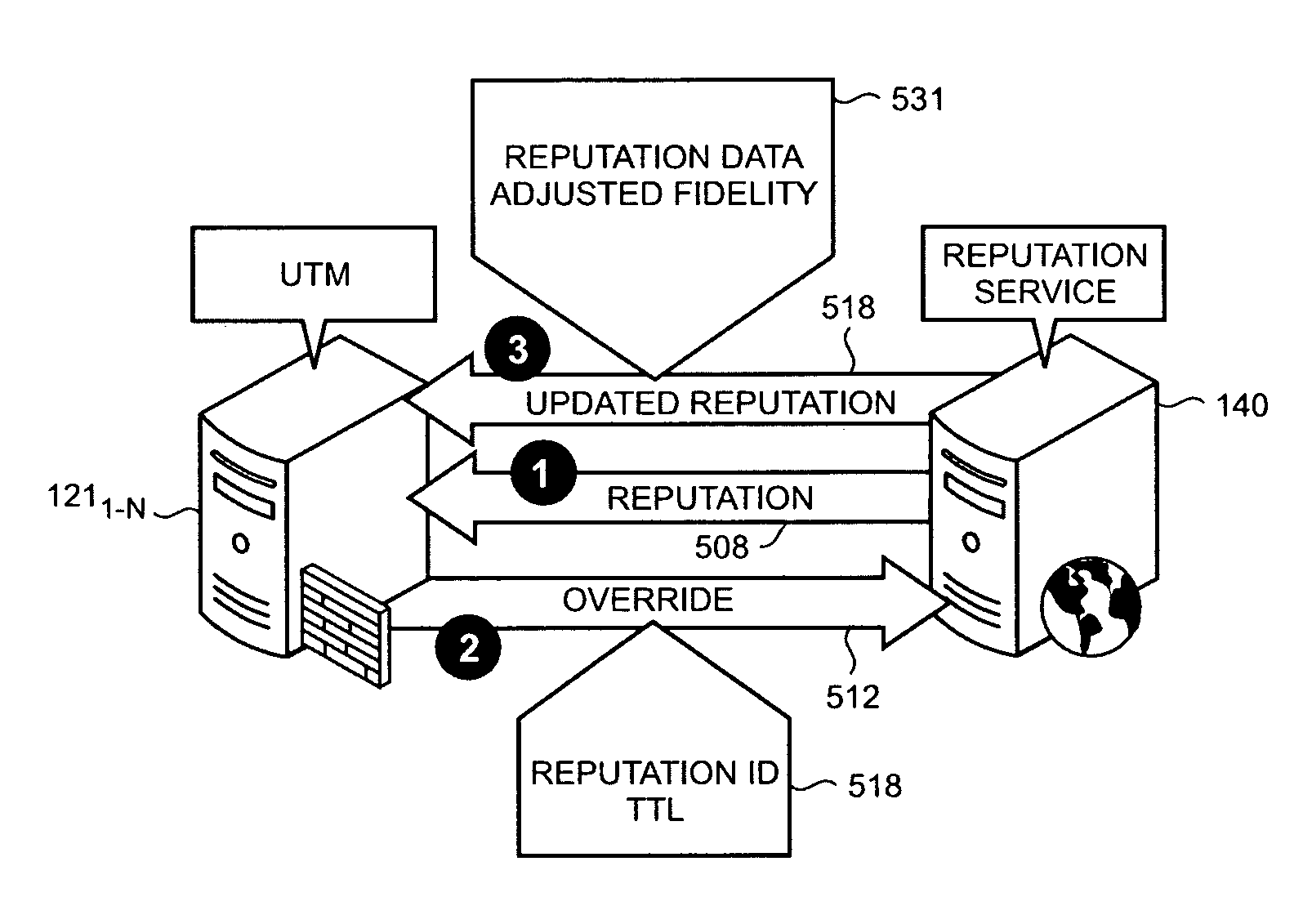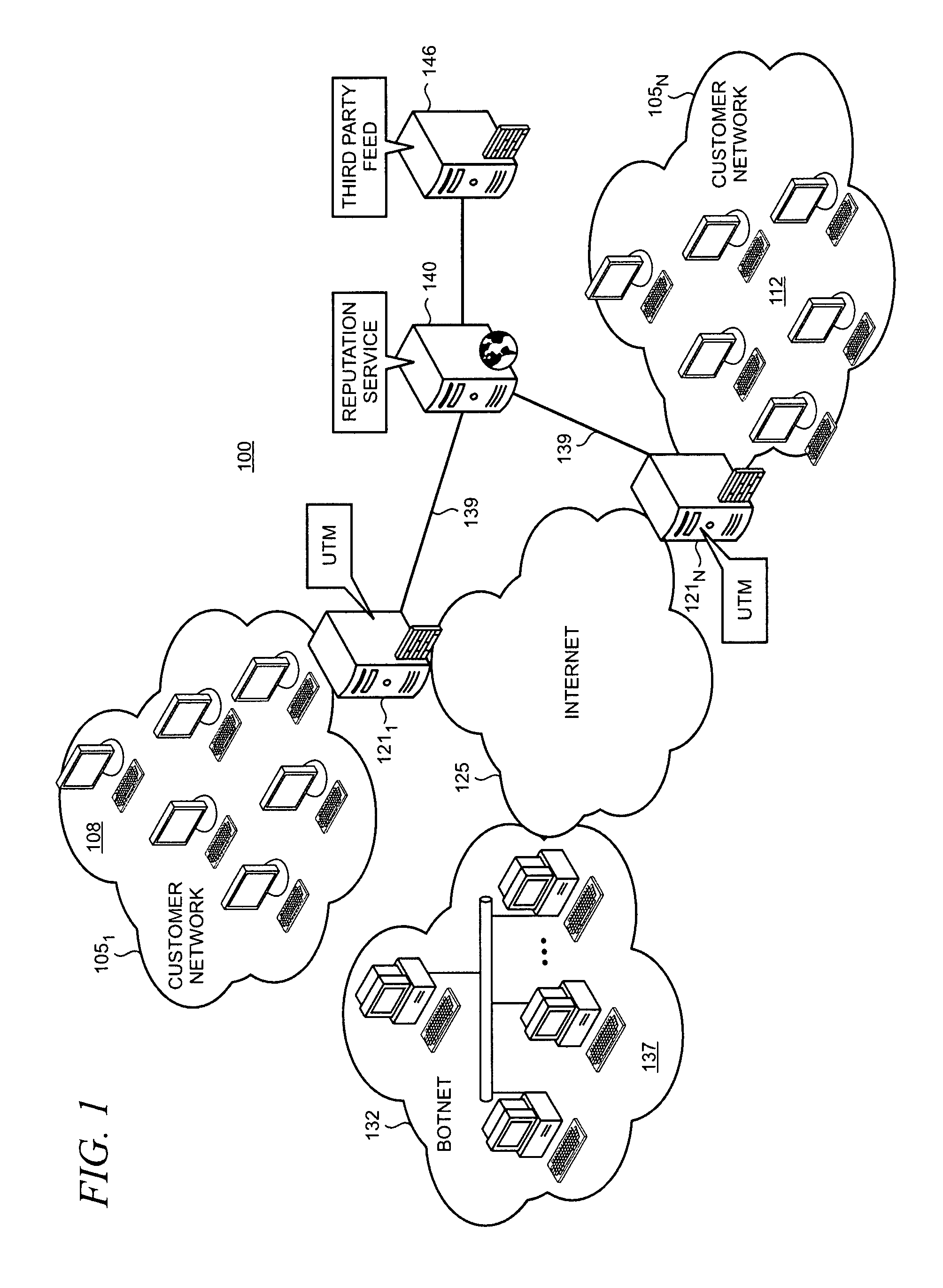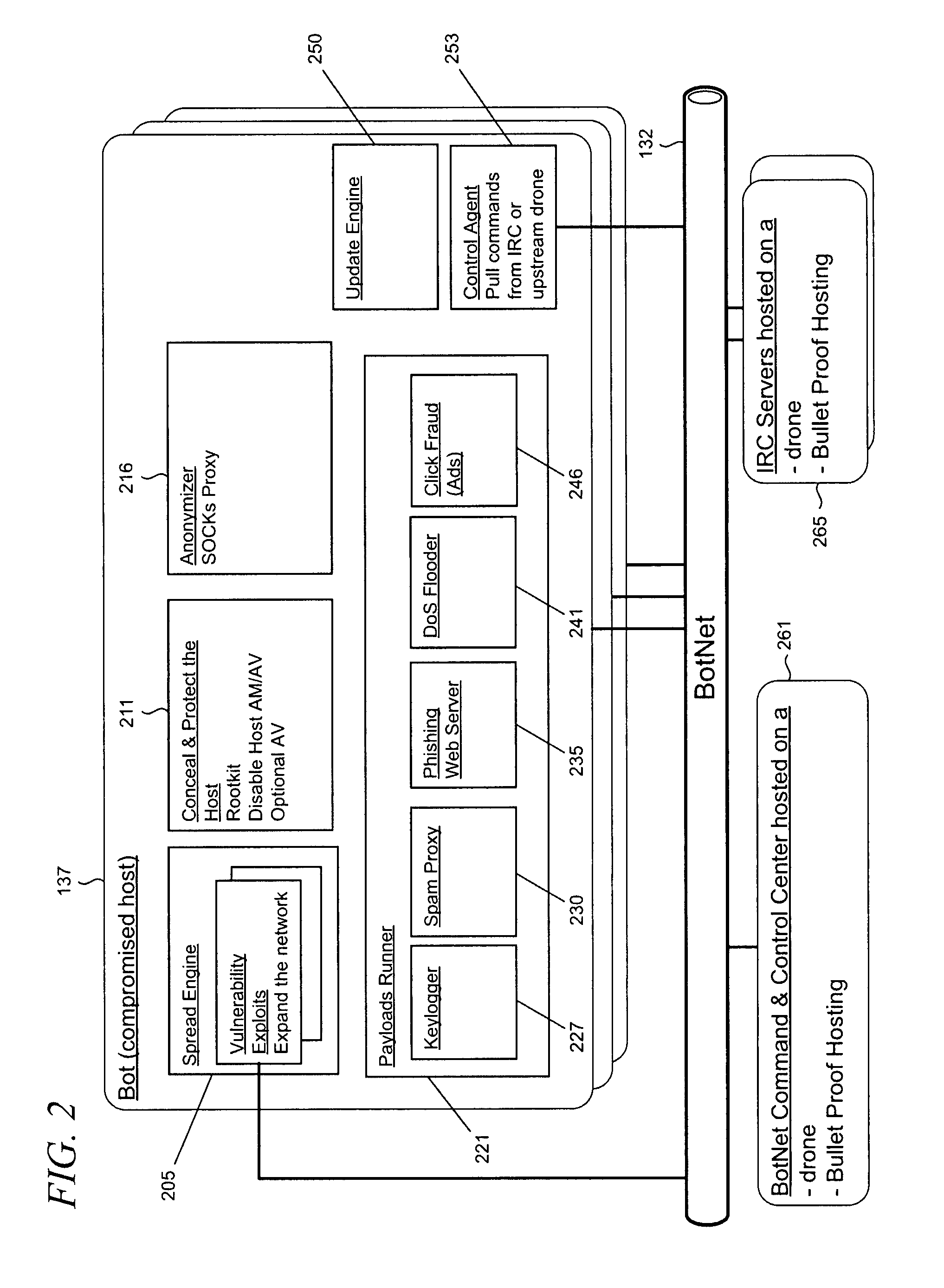Reduction of false positive reputations through collection of overrides from customer deployments
a technology of customer deployment and overrides, applied in the field of computer hacker, can solve the problems of affecting the use and success of reputation services, significant disruption to users, and high cost to service providers to resolve disputes and restore services, and achieve the effect of reducing the confidence that the overrides are justified and reducing the confidence that a blacklisting is accura
- Summary
- Abstract
- Description
- Claims
- Application Information
AI Technical Summary
Benefits of technology
Problems solved by technology
Method used
Image
Examples
Embodiment Construction
[0020]FIG. 1 shows an illustrative computer network environment 100 in which the present arrangement for reduction of false positives by a reputation service through collection of overrides may be utilized. A number of enterprise or customer networks 105-1 . . . N are included in the environment 100. Customer network 1051, includes a number of hosts 108 and customer network 105N includes hosts 112. Networks 105 are protected by UTMs 121-1 . . . N that perform a variety of functions to protect the hosts inside the networks 105 from external threats and adversaries, particularly those that are accessed via the Internet 125. UTMs are security products that are commonly built on edge or network firewall products that incorporate many features in a single product including, for example, e-mail filtering, anti-virus (“AV”) and anti-malware (“AM”) protection, and intrusion detection, along with traditional proxy-based (i.e., application-layer) firewall functions.
[0021]An illustrative botne...
PUM
 Login to View More
Login to View More Abstract
Description
Claims
Application Information
 Login to View More
Login to View More - R&D
- Intellectual Property
- Life Sciences
- Materials
- Tech Scout
- Unparalleled Data Quality
- Higher Quality Content
- 60% Fewer Hallucinations
Browse by: Latest US Patents, China's latest patents, Technical Efficacy Thesaurus, Application Domain, Technology Topic, Popular Technical Reports.
© 2025 PatSnap. All rights reserved.Legal|Privacy policy|Modern Slavery Act Transparency Statement|Sitemap|About US| Contact US: help@patsnap.com



